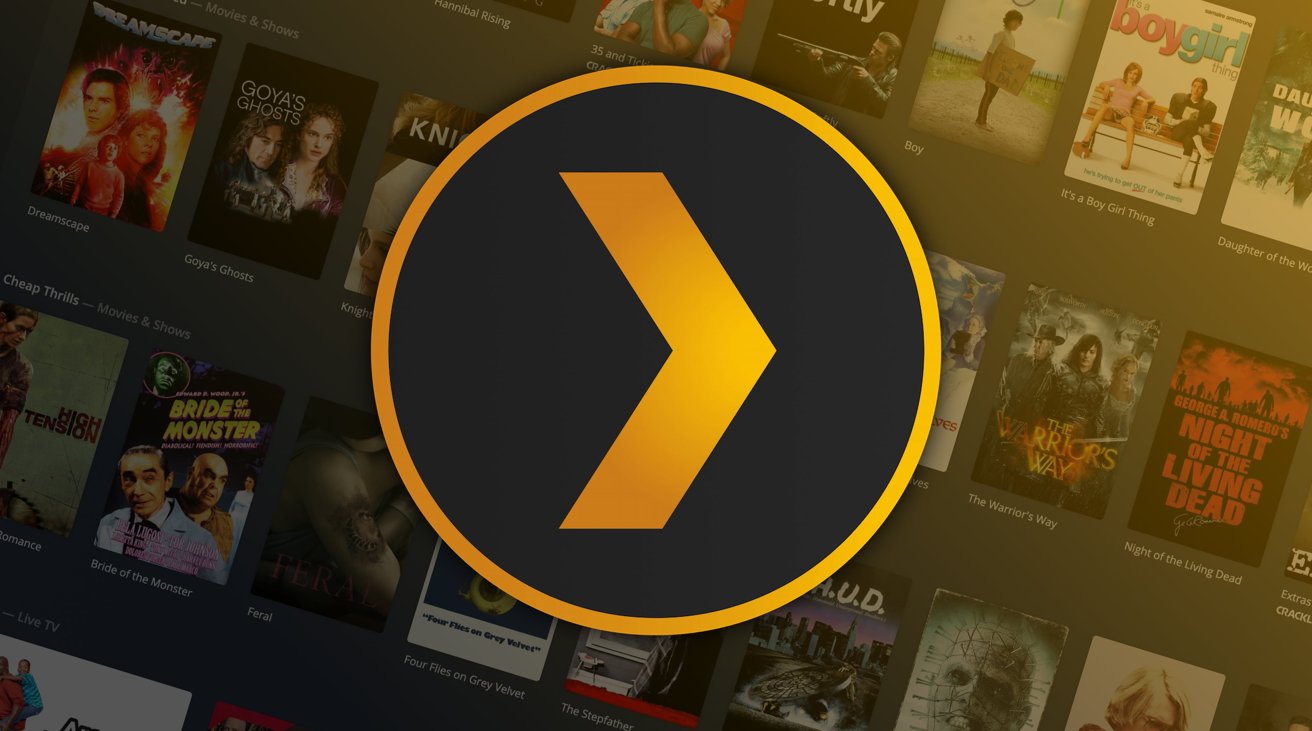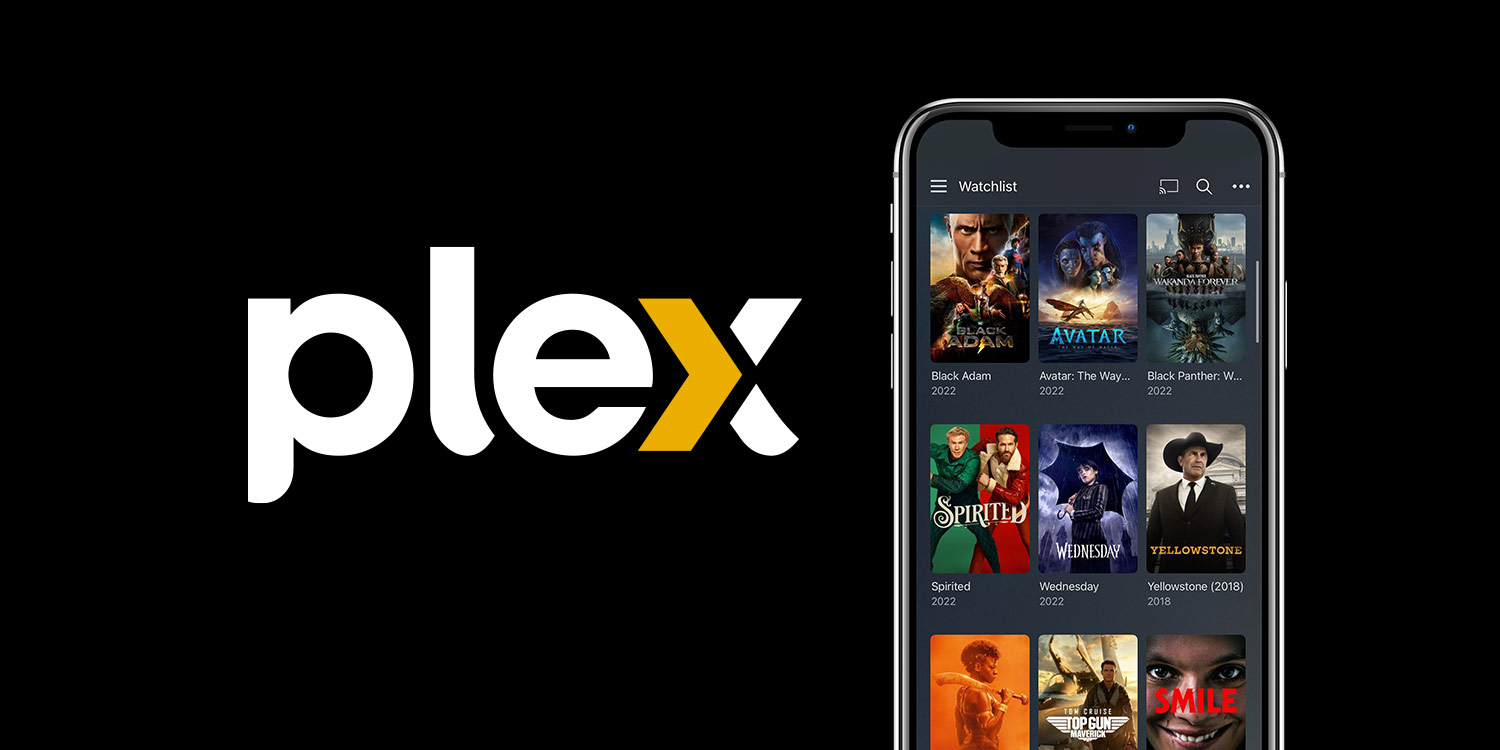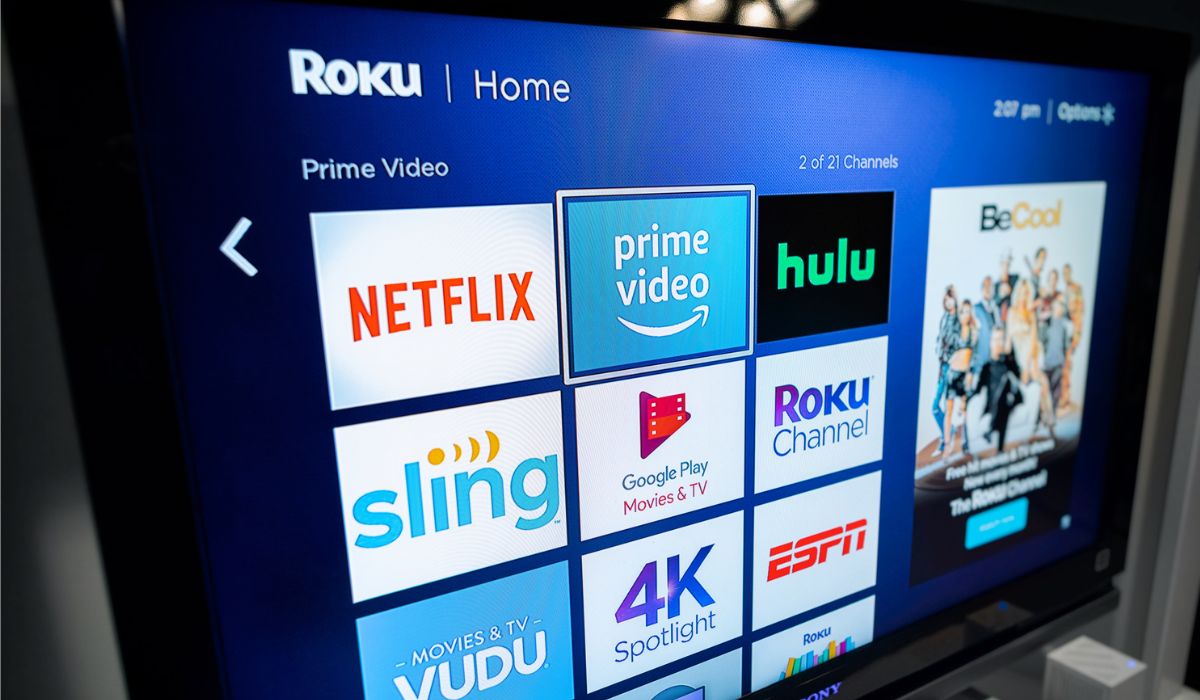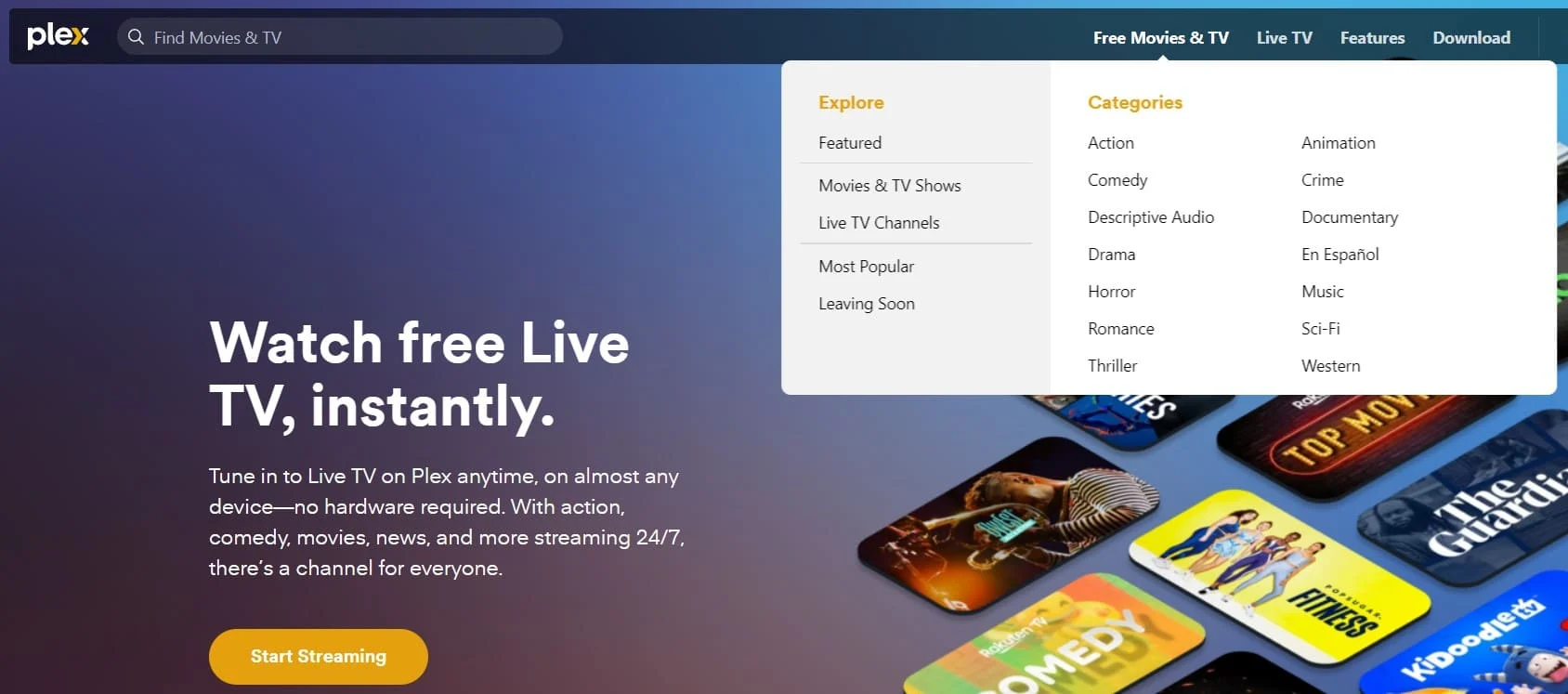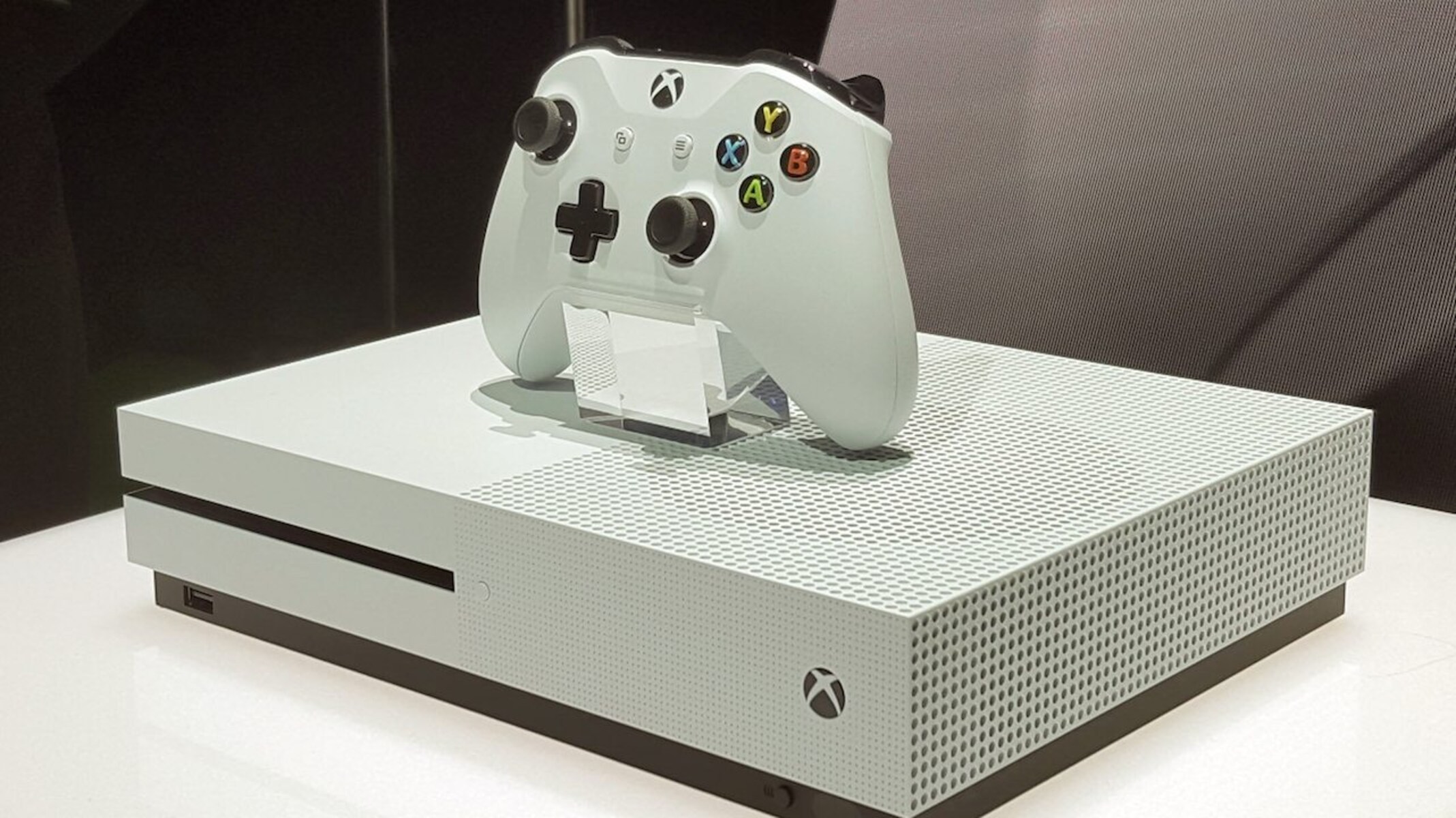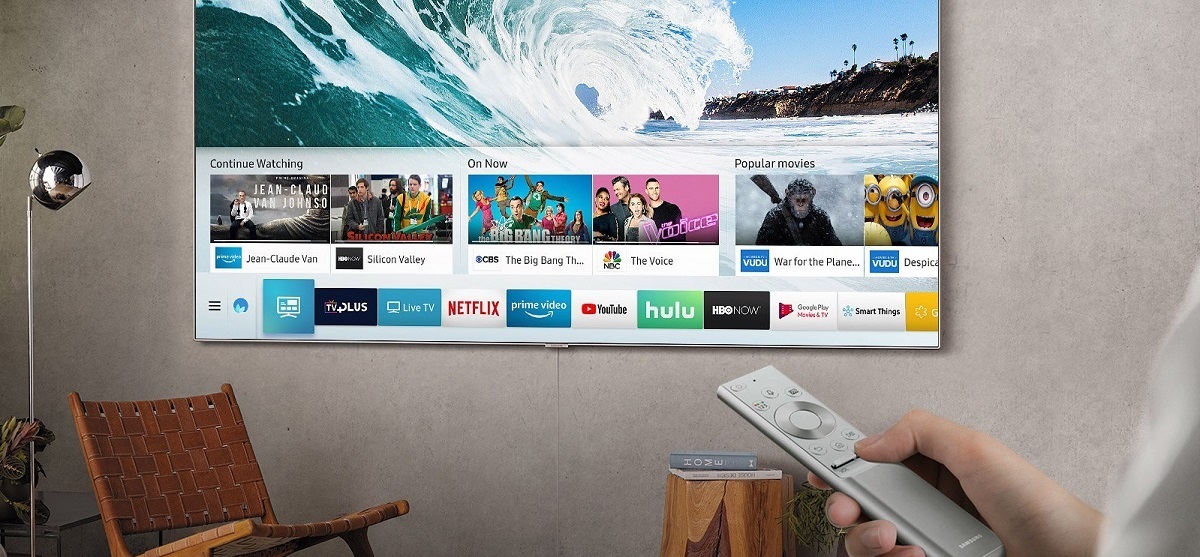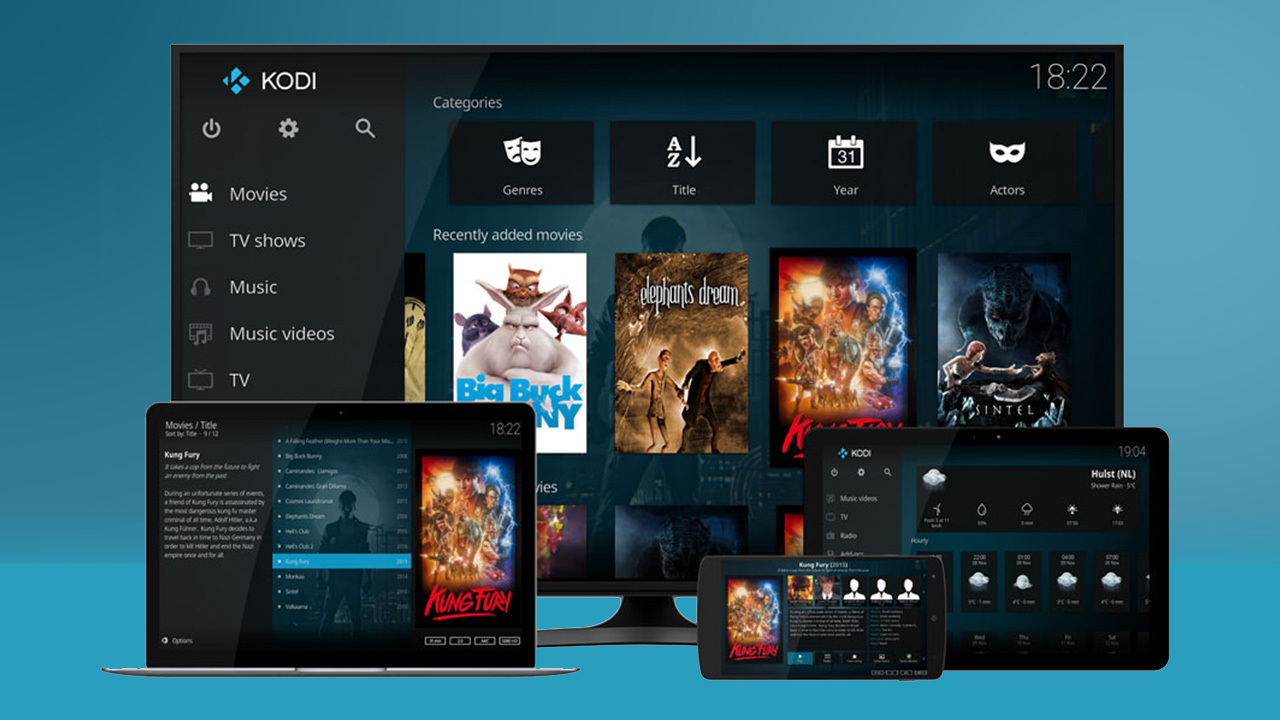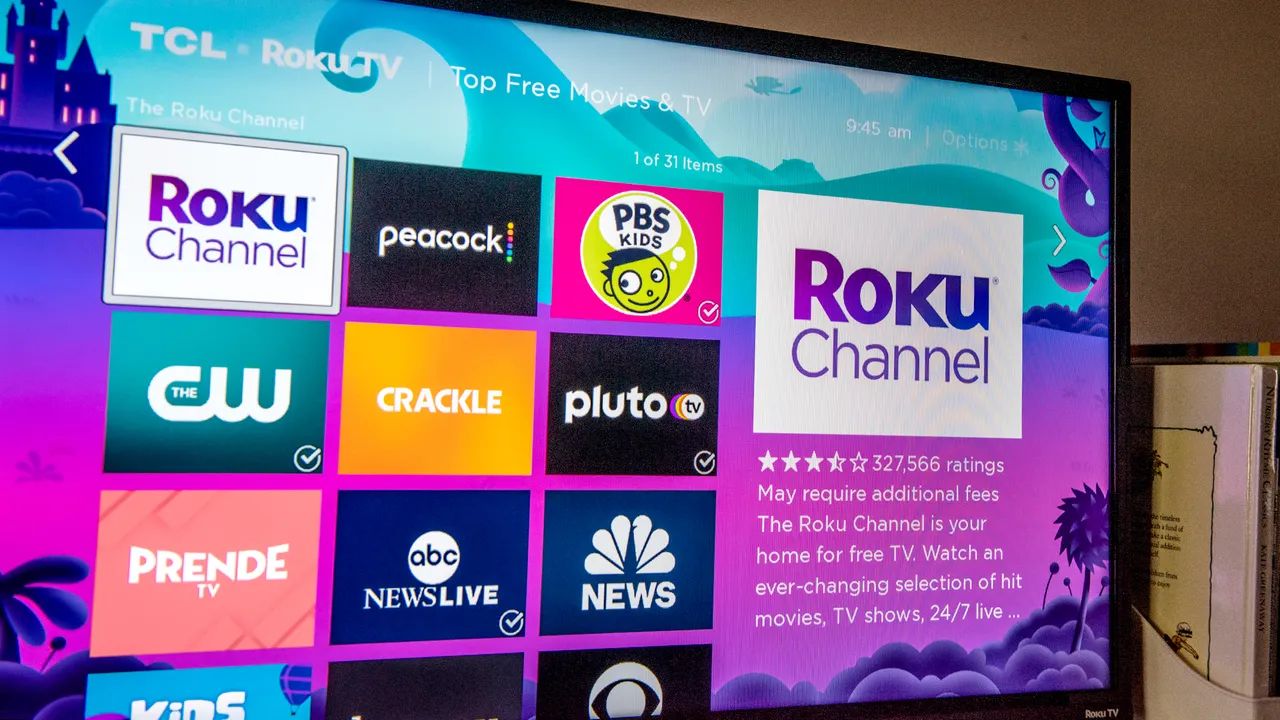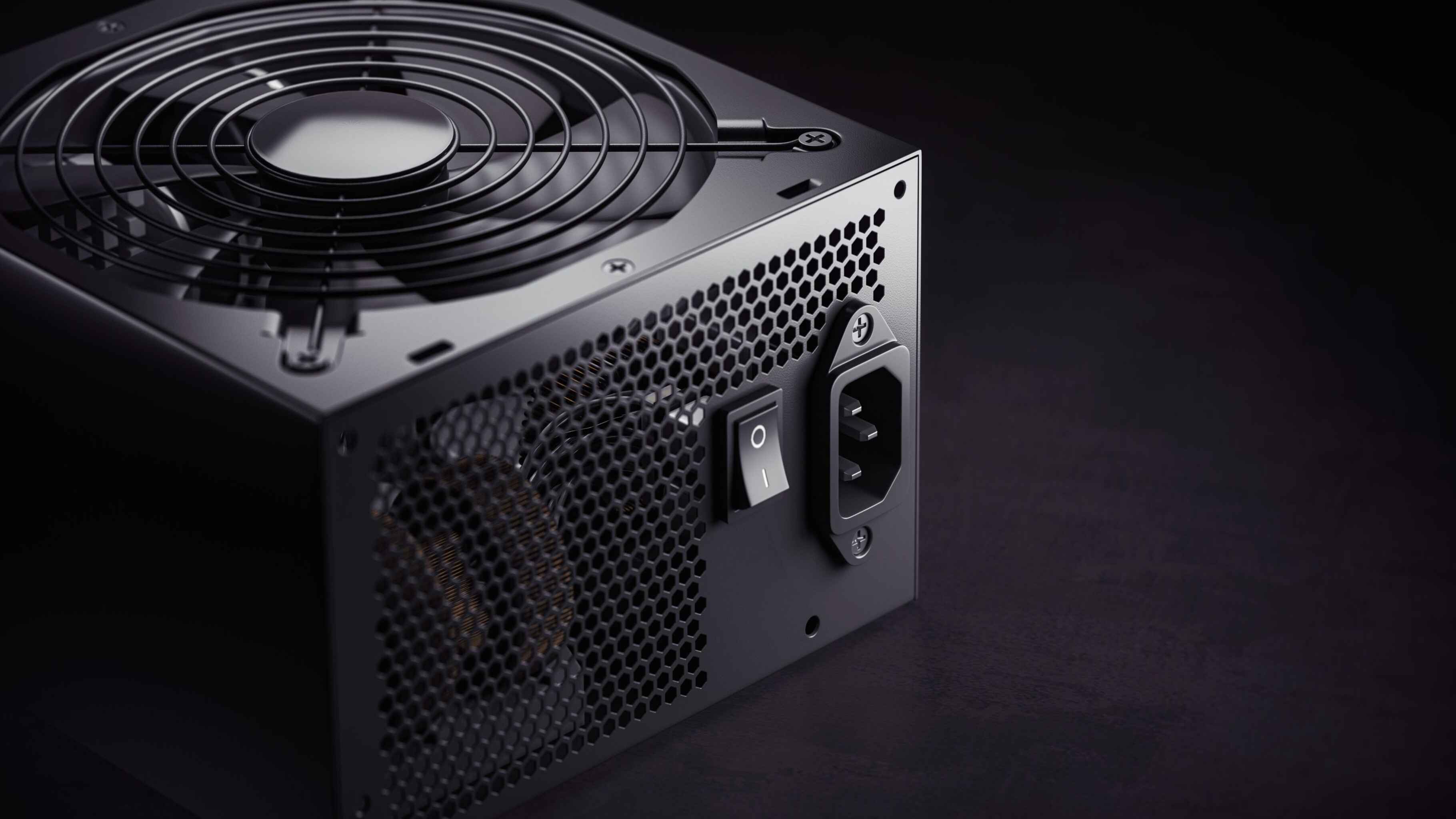Introduction
Welcome to the world of Plex! If you’re a fan of movies, TV shows, and music, chances are you’ve heard of Plex. It’s a powerful media server that allows you to organize, stream, and enjoy your media collection across multiple devices. But did you know that you can also download media from Plex? That’s right! In this article, we’ll guide you through the process of downloading your favorite movies and TV shows from your Plex media server.
So, why would you want to download media from Plex in the first place? Well, there are a few reasons. Firstly, downloading allows you to have offline access to your media, which is great for situations where you don’t have an internet connection. Whether you’re traveling, on a road trip, or simply relaxing in a remote location, having your favorite movies and shows downloaded can provide endless entertainment. Additionally, downloading media also allows you to save on data usage, especially if you have limited internet bandwidth or a strict data plan.
Before we delve into the steps of downloading media from Plex, make sure you have the Plex Media Server installed on your device. This server is the heart of your media collection and provides the necessary tools to manage and access your media library.
What is Plex?
Plex is a versatile media server platform that allows you to organize and access your media collection in a convenient and user-friendly way. It acts as a central hub for all your movies, TV shows, music, photos, and more, making it easy to enjoy your media on various devices, whether at home or on the go.
At its core, Plex is a server-client system. The Plex Media Server is responsible for storing, managing, and streaming your media files, while the Plex client applications allow you to access your media library from different devices, such as smartphones, tablets, smart TVs, gaming consoles, and computers.
Plex offers extensive compatibility, supporting a wide range of operating systems, including Windows, macOS, Linux, and even popular network-attached storage (NAS) devices. This flexibility allows you to set up a Plex server on the platform that suits you best.
One of the standout features of Plex is its ability to automatically gather and display rich metadata for your media files. From movie posters and synopses to episode summaries and album covers, Plex enhances your media library with visually appealing and informative content.
Another great aspect of Plex is its robust transcoding capabilities. This means that Plex can automatically convert media files on the fly, optimizing them for the device you’re using to stream or download. Whether you’re watching a movie on your smartphone or downloading it to your tablet for offline viewing, Plex ensures that the media is in the correct format and quality for seamless playback.
Plex also offers impressive media organization features. You can create custom libraries to categorize your media based on various criteria, such as genre, year, director, or artist. You can also tailor your library with personal tags, collections, and even parental controls.
Furthermore, Plex provides a user-friendly interface that makes navigating your media library a breeze. You can explore your collection by browsing through different sections, searching for specific titles, or even using Plex’s recommendation system to discover new content based on your viewing habits.
Overall, Plex is a powerful and convenient media server platform that allows you to access and enjoy your media collection from anywhere, at any time. Now that you have an understanding of what Plex is, let’s dive into the process of downloading media from Plex.
Why would you want to download from Plex?
Downloading media from Plex offers several benefits and can enrich your entertainment experience in various ways. Here are a few reasons why you might want to download media from Plex:
1. Offline Access: One of the primary reasons to download media from Plex is the ability to enjoy your favorite movies and TV shows even when you don’t have an internet connection. Whether you’re taking a long flight, going on a road trip, or simply relaxing in an area with limited connectivity, having downloaded media ensures that you can still indulge in your entertainment without relying on a network connection.
2. Data Savings: Streaming content requires internet bandwidth, and if you have a limited data plan or slow internet connection, downloading media from Plex can help you conserve data. By downloading your preferred movies or TV episodes in advance, you eliminate the need for continuous streaming, ultimately reducing data usage and avoiding potential bandwidth constraints.
3. Quality and Stability: By downloading media from Plex, you have more control over the quality and stability of your viewing experience. Unlike streaming, where the video quality can fluctuate depending on your internet connection, downloaded media ensures a consistent playback experience with the desired resolution and no buffering interruptions.
4. Convenience and Flexibility: Having downloaded media from Plex provides convenience and flexibility in how and where you consume your content. You can watch your favorite shows and movies on various devices, such as smartphones, tablets, laptops, or even smart TVs, without worrying about compatibility or internet connectivity.
5. Personal Archiving: Downloading media from Plex also allows you to create your personal media archive. You can store your favorite movies, TV series, or music on your device or external storage for long-term preservation. This comes in handy when you want to revisit old content or have a backup of your media library.
6. Enhanced Playback Features: Some Plex client applications offer additional playback features for downloaded media, such as the ability to skip intros, enable subtitles, or adjust playback speed. These features provide a more customized and enjoyable viewing experience.
With these benefits in mind, downloading media from Plex becomes an attractive option for users who want control, convenience, and flexibility over their media consumption. Now that you understand why downloading from Plex can be advantageous, let’s explore the steps to download media from your Plex Media Server.
Step 1: Install the Plex Media Server
The first step in downloading media from Plex is to have the Plex Media Server installed on your device. The Plex Media Server is the backbone of your media collection, allowing you to store, manage, and access your media files from various devices.
Here’s how you can install the Plex Media Server:
1. Choose your operating system: Plex is available for a wide range of operating systems, including Windows, macOS, Linux, and even network-attached storage (NAS) devices. Visit the official Plex website and download the appropriate installer for your operating system.
2. Run the installer: Once the installer file is downloaded, run it to initiate the installation process. Follow the on-screen instructions to proceed with the installation. Make sure to review and accept the license agreement before moving forward.
3. Configure basic settings: After the installation is complete, the Plex Media Server will launch, and you will be prompted to configure some basic settings. You will need to provide a name for your server and sign in with a Plex account. If you don’t have an account, you can create one for free.
4. Add media libraries: Once you’re signed in, you can start adding media libraries to your Plex Media Server. These libraries can contain movies, TV shows, music, photos, and more. Plex will automatically scan and organize your media files, fetching metadata like cover art, descriptions, and other information to enhance your library.
5. Configure additional settings (optional): Plex provides various advanced settings and customization options. You can set up remote access to your server, enable synchronization for offline media, configure transcoding options, and more. Take the time to explore these settings and adjust them according to your preferences.
6. Update your media library: After setting up your Plex Media Server and adding your media libraries, give Plex some time to scan and update your library. This process might take a while, especially if you have a large collection of media files.
Congratulations! You have successfully installed the Plex Media Server on your device. Now, you’re ready to proceed with setting up your Plex Media Server and start downloading media from Plex. In the next step, we’ll guide you through the process of setting up your Plex Media Server to ensure a seamless downloading experience.
Step 2: Set up your Plex Media Server
Now that you have installed the Plex Media Server, it’s time to set up and configure your server to optimize your media library and ensure a smooth downloading experience. Follow these steps to get your Plex Media Server up and running:
1. Access the Plex Media Server dashboard: Open your preferred web browser and enter “http://localhost:32400/web” in the address bar. This will take you to the Plex Media Server dashboard, where you can manage and customize your server.
2. Sign in to your Plex account: If you’re not already signed in, click on the “Sign In” button at the top right corner of the dashboard. Enter your Plex account credentials to sign in and access your server.
3. Configure server settings: On the left sidebar of the Plex dashboard, click on “Settings” to access the server settings. Here, you can fine-tune various aspects of your media server, such as the server name, remote access, library agents, and more. Take your time to explore these settings and customize them according to your preferences.
4. Set up remote access: If you want to access your Plex server outside of your home network, you’ll need to set up remote access. In the server settings, navigate to the “Remote Access” section and follow the instructions to enable remote access. This will allow you to stream and download your media from anywhere with an internet connection.
5. Configure library settings: Go to the “Libraries” section of the server settings to manage and configure your media libraries. Here, you can add new libraries, specify the location of your media files, choose agents for metadata retrieval, and adjust advanced settings like language preferences and media matching options.
6. Customize your server: Plex offers various customization options to enhance your media server experience. You can change the appearance of your Plex dashboard by selecting different themes, enable advanced options like DLNA streaming or hardware transcoding, and configure automatic library updates and maintenance tasks.
7. Save settings and restart the server: After making changes to your server settings, remember to save your settings. To apply the changes, restart your Plex Media Server by clicking on the “Restart” button in the server settings. This will ensure that your server is running with the updated configurations.
With your Plex Media Server properly set up and configured, you’re now ready to start accessing your media library and downloading your favorite movies and TV shows. In the next step, we’ll guide you through the process of accessing your media library in Plex, so you can begin downloading media effortlessly.
Step 3: Accessing your media library in Plex
Now that you have set up your Plex Media Server, it’s time to access your media library and start enjoying your favorite movies, TV shows, and music. Plex provides multiple ways to access your libraries, ensuring a seamless and user-friendly experience. Follow these steps to access your media library in Plex:
1. Open the Plex Media Server: Launch the Plex client application on your desired device, whether it’s a smartphone, tablet, smart TV, or computer. Make sure that the device is connected to the same network as your Plex Media Server.
2. Sign in to your Plex account: If you’re not already signed in, select the “Sign In” option and enter your Plex account credentials. Make sure to use the same account that you used to set up your Plex Media Server.
3. Choose your Plex server: After signing in, you will see a list of available Plex servers. Select the server that corresponds to your Plex Media Server from the list. If you have only one server, it will be selected automatically.
4. Navigate to your media library: Once connected to your Plex Media Server, you will have access to your media libraries. Navigate through the various libraries, such as Movies, TV Shows, Music, Photos, or any custom libraries you have created.
5. Browse and search for content: Within each media library, you can browse through your collection or use the search feature to find specific titles. Plex provides a clean and intuitive interface, allowing you to view posters, descriptions, cast information, and more for each item in your library.
6. Select the media you want to download: When you find the desired movie, TV show, or music track that you want to download, click on it to open its details page. From there, you’ll have various options depending on your Plex client application, such as “Download,” “Sync,” or “Offline Mode.”
7. Start the download process: Follow the prompts or buttons provided by your Plex client application to initiate the download process. You may have the option to select specific episodes, seasons, or tracks to download, depending on the media type.
That’s it! You have successfully accessed your media library in Plex and are now ready to start downloading media to enjoy offline. In the next step, we’ll guide you through the process of downloading media from Plex and choosing the desired media format.
Step 4: Downloading media from Plex
Once you have accessed your media library in Plex, you can start downloading your favorite movies, TV shows, and music for offline access. Follow these steps to download media from Plex:
1. Select the media to download: Browse through your media library and choose the movie, TV show, or music that you want to download. Open the media details page by clicking on it.
2. Look for the download option: On the media details page, look for the download option. Some Plex client applications provide a dedicated “Download” button, while others may use different terminology like “Sync” or “Offline Mode.”
3. Choose the desired quality: Depending on your Plex settings and the available options, you may be able to select the quality or resolution of the downloaded media. Choose the quality that suits your preferences and the capabilities of your device.
4. Start the download: Click on the download button or follow the on-screen prompts to initiate the download process. The media will begin downloading to your device or designated storage location, depending on your Plex client application and settings.
5. Monitor the download progress: Keep an eye on the download progress to see how much of the media has been downloaded. Depending on the size and speed of your internet connection, it may take some time to complete the download.
6. Enjoy offline access: Once the download is complete, you can enjoy offline access to the downloaded media. You can open your Plex client application and navigate to the appropriate section or library to access the downloaded content. No internet connection is required to watch or listen to the downloaded media.
7. Manage downloaded media: Plex client applications usually have options to manage your downloaded media. You can delete or remove downloaded items when you no longer need them, freeing up storage space on your device.
By following these steps, you can easily download media from Plex and enjoy offline access to your favorite content wherever you are. In the next step, we’ll discuss the importance of choosing the right media format for your downloads.
Step 5: Choosing the media format
When downloading media from Plex, it’s important to choose the right media format that suits your device and preferences. The media format determines the quality, compatibility, and file size of the downloaded content. Follow these steps to choose the ideal media format:
1. Consider your device’s capabilities: Different devices have varying capabilities when it comes to media playback. Check the specifications of your device or the Plex client application you’re using to understand the supported formats and resolutions. This information will help you select a format that is compatible with your device.
2. Balance quality and file size: The media format you choose can significantly impact the quality and file size of your downloads. Consider your storage constraints and the balance between high-quality playback and the amount of storage space required. Higher quality formats like Blu-ray or lossless audio will provide superior quality but will also take up more storage space.
3. Check available options: Once you have determined your device’s capabilities and storage preferences, check the available options for the media you want to download. Plex may provide multiple format options, such as MP4, MKV, AVI, MP3, or FLAC. Compare the available formats and their respective quality settings.
4. Optimize for your needs: Consider your specific needs and preferences when choosing the media format. If you have a device with limited storage, selecting a lower-quality format or compressing the media files may be necessary. On the other hand, if you prioritize high-definition playback, you can choose a format that supports higher resolutions and bitrates.
5. Test and adjust: After downloading media in a particular format, test it on your device to ensure smooth playback and satisfactory quality. If you find any issues, such as compatibility or audio/video synchronization problems, you may need to choose a different format that works better for your device.
6. Experiment with transcoding: If your Plex client application and server support transcoding, you can experiment with different formats and quality settings. Transcoding allows Plex to convert the media files on-the-fly, optimizing them for the playback device. This can help maintain compatibility and ensure smooth playback even if the original download format isn’t ideal for your device.
By carefully considering your device’s capabilities, balancing quality and file size, and experimenting with different formats, you can choose the optimal media format for your downloads from Plex. In the next step, we’ll guide you through the process of downloading media to your device for offline access.
Step 6: Downloading media to your device
Once you have chosen the desired media format and quality, it’s time to download the media from Plex to your device for offline access. Follow these steps to download media to your device:
1. Open the Plex client application: Launch the Plex client application on your device, ensuring that it is connected to the internet and logged in to your Plex account.
2. Access your media library: Navigate to the appropriate section or library where the media you want to download is located. Browse through your collection and select the specific media item you want to download.
3. Initiate the download: On the media details page, look for the download button or option. Depending on your Plex client application, this may be labeled as “Download,” “Sync,” or “Offline Mode.” Click or select this option to start the download process.
4. Monitor the download progress: Keep an eye on the download progress, which is usually indicated by a progress bar or a percentage. Larger files or higher quality downloads may take longer to complete, so be patient and ensure that your device remains connected to a stable internet connection.
5. Verify the successful download: Once the download is complete, verify that the media has been successfully downloaded to your device. Depending on your Plex client application, you may see a download icon or indicator next to the media item to indicate that it is available for offline access.
6. Access the downloaded media: Once the media is downloaded, you can access it in the appropriate section or library of your Plex client application. Look for the “Downloads,” “Synced Content,” or “Offline” sections, where you will find the media items that you have downloaded for offline access.
7. Enjoy offline playback: With the media successfully downloaded to your device, you can now enjoy offline playback. Open the downloaded media item and play it within your Plex client application without requiring an internet connection.
By following these steps, you can easily download media from Plex to your device and enjoy your favorite movies, TV shows, and music wherever you are, without the need for an internet connection. In the final step, we’ll explore how to organize and manage your downloaded media within the Plex client application.
Step 7: Organizing downloaded media
Once you have downloaded media from Plex for offline access, it’s important to organize and manage your downloaded files within the Plex client application. This helps you keep track of your downloaded content and ensures easy accessibility. Follow these steps to organize your downloaded media:
1. Create custom playlists: Within the Plex client application, you can create custom playlists to organize your downloaded media. For example, you can create playlists based on genres, moods, or specific themes to easily categorize and access your content.
2. Utilize collections and tags: Plex offers the ability to create collections and apply tags to your media. Collections group related media items together, while tags allow you to add specific labels or keywords to further classify and organize your downloaded media.
3. Sort and filter options: Most Plex client applications provide sorting and filtering options to arrange your downloaded media. You can sort by title, release date, or other criteria, and apply filters based on genres, actors, or other metadata to quickly find the media you’re looking for.
4. Edit metadata and artwork: If you notice any discrepancies or inaccuracies in the metadata or artwork of your downloaded media, you can edit and update this information within the Plex client application. This ensures that your library remains organized and visually appealing.
5. Delete unnecessary downloads: Over time, you may accumulate a large number of downloaded media files. Take the time to review your downloads and remove any files that you no longer need or want to free up storage space on your device.
6. Regularly sync and update: If you have enabled syncing or automatic download updates within your Plex client application, make sure to regularly sync your downloaded media and check for updates. This ensures that your library remains up to date and reflects any changes made to the original media files on your Plex Media Server.
7. Backup your downloaded media: To safeguard your downloaded media files, it’s a good practice to create backups on external storage devices or cloud storage platforms. This ensures that even if you lose access to your device or encounter any issues, you can easily recover your downloaded media.
By following these steps and actively organizing your downloaded media within the Plex client application, you can easily manage and access your content, creating a personalized and enjoyable offline media library experience.
Conclusion
Downloading media from Plex opens up a world of possibilities for enjoying your favorite movies, TV shows, and music offline. With the ability to access your media library anywhere and anytime, you can have entertainment at your fingertips without relying on an internet connection. Let’s recap the steps to download media from Plex:
In Step 1, you installed the Plex Media Server, which serves as the backbone of your media collection. Step 2 involved setting up and configuring your Plex Media Server, ensuring that it meets your preferences and requirements. In Step 3, you learned how to access your media library in Plex, providing you with a seamless way to browse and select the media you want to download.
In Step 4, you discovered the process of actually downloading media from Plex, choosing the appropriate format and quality for your downloads. Step 5 focused on the importance of selecting the right media format to ensure compatibility and optimal playback. Next, in Step 6, you learned how to download media to your device for offline access, enabling you to enjoy your content without an internet connection.
Finally, in Step 7, you explored the significance of organizing your downloaded media, allowing you to easily manage and locate your content within the Plex client application.
By following these steps, you can fully harness the power of Plex and create a personalized offline media library that suits your preferences and lifestyle.
So, go ahead and start downloading your favorite movies, TV shows, and music from Plex. Enjoy the convenience, flexibility, and uninterrupted entertainment provided by offline access to your media library. Whether you’re traveling, on-the-go, or simply in a place with limited internet connectivity, Plex ensures that your entertainment needs are met.
Embrace the world of Plex and elevate your media consumption experience to new heights. Happy downloading!







